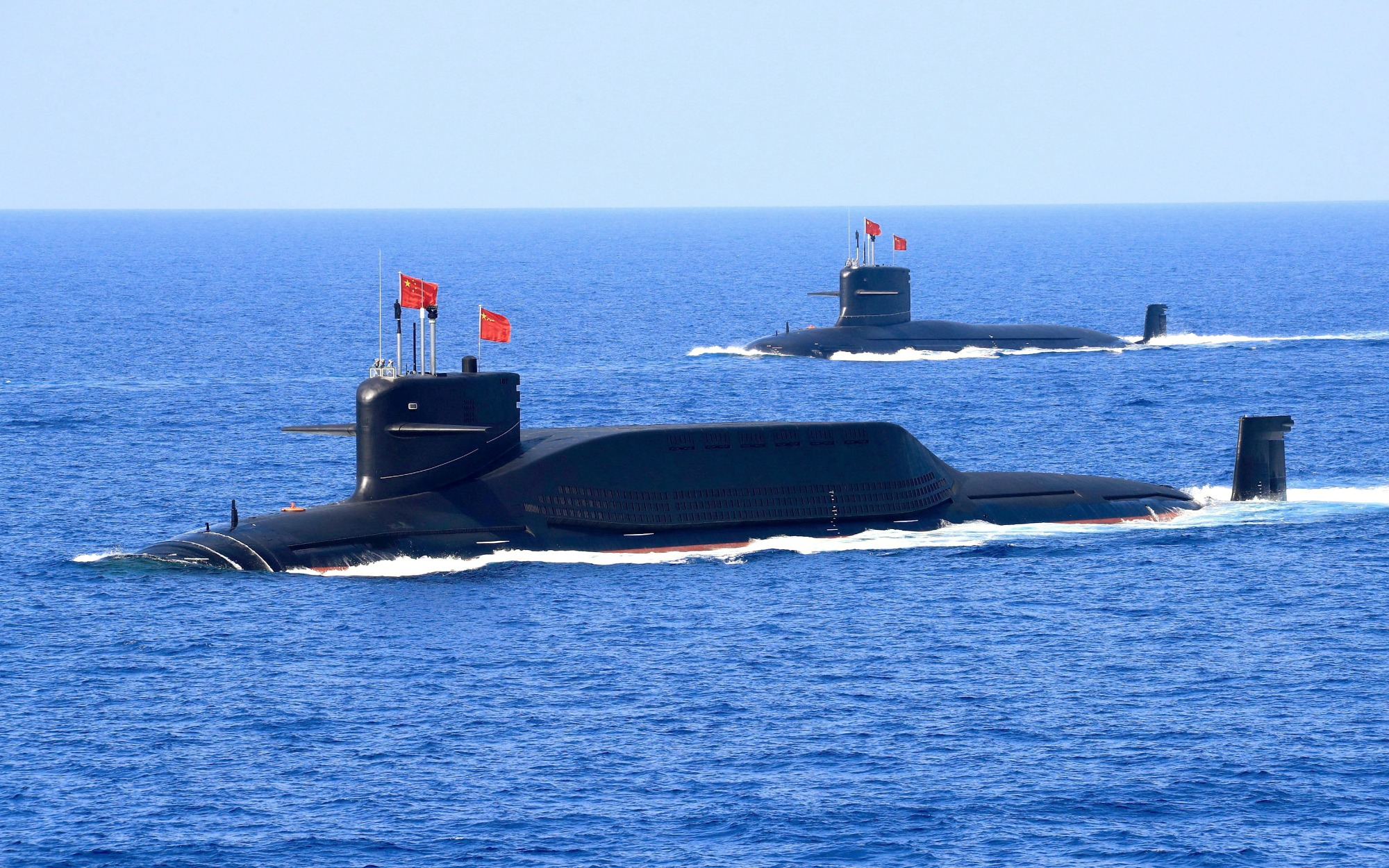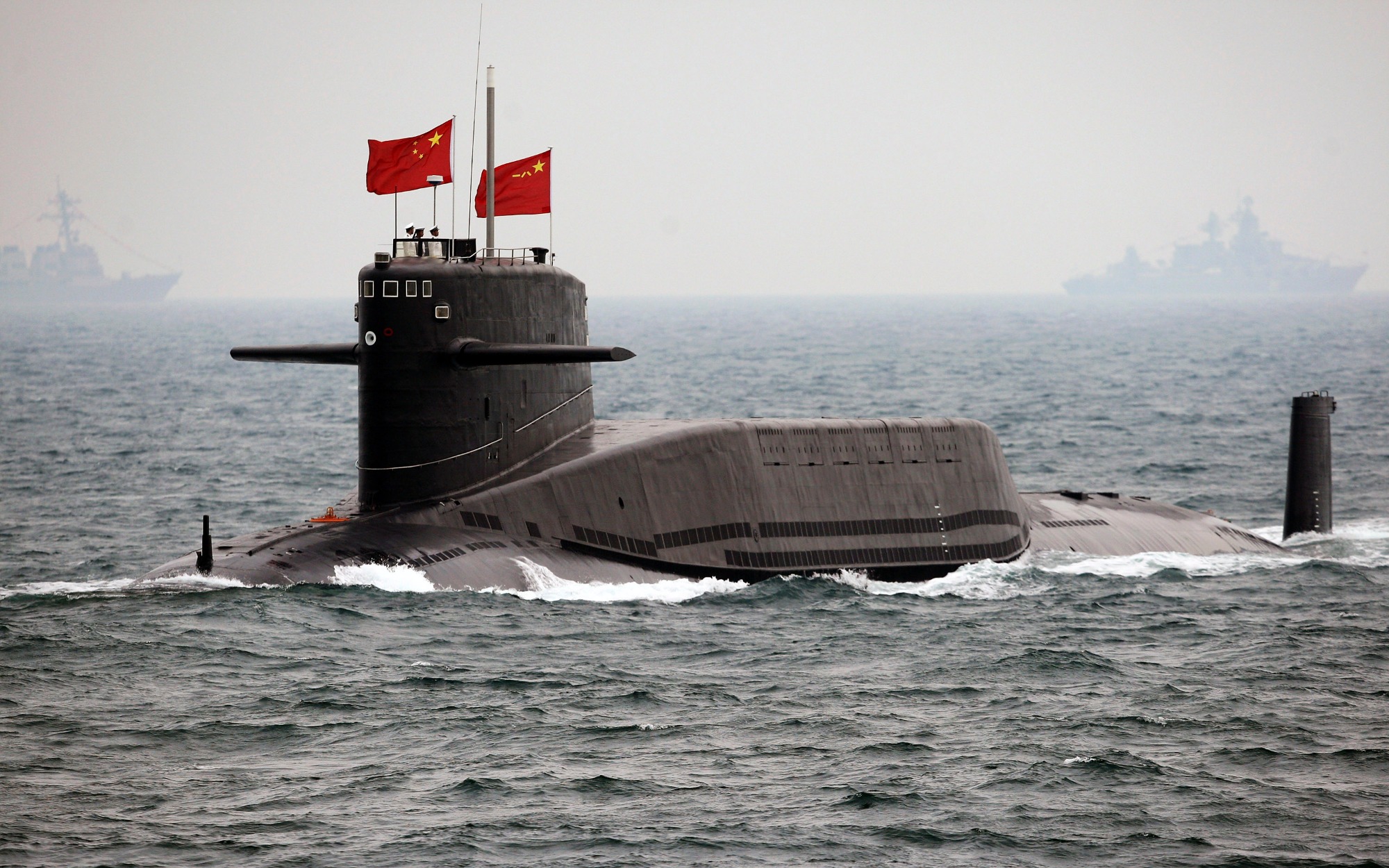China's Type 094 Missile Submarine Was Built for a Nuclear War Against America
China's military modernization aims to transform the nation into a dominant maritime power. Key to this transformation is the development of the SSBN (nuclear submarine) fleet, primarily consisting of Type 094 Jin-class submarines.
Summary and Key Points: China's military modernization aims to transform the nation into a dominant maritime power. Key to this transformation is the development of the SSBN (nuclear submarine) fleet, primarily consisting of Type 094 Jin-class submarines.

-These submarines enhance China’s strategic capabilities by operating covertly and carrying nuclear missiles with significant range.
-Despite being more detectable than U.S. submarines, they pose a considerable threat.
-The SSBN fleet’s growth represents a substantial challenge to U.S. and allied forces in the Indo-Pacific, necessitating advanced countermeasures and strategic planning by the United States.
China’s Naval Modernization: The Growing Threat of the Type 094 Jin-Class Submarines
China’s military has been on a modernization spree for the last decade. Part of Beijing’s modernization push aims to turn their nation into a true maritime power.
Throughout most of China’s recorded 4,000-year history, the nation has been a continental power. But for China to truly achieve Xi Jinping’s “China Dream” by 2049, the hundredth-year anniversary of the founding of the People’s Republic of China, Beijing must have a navy that can dominate its region and challenge the U.S. Navy.
The submersible ship ballistic nuclear (SSBN) platform – the nuclear submarine – is a key strategic platform that Beijing has invested into. This system does a few things. First, it allows for the People’s Liberation Army Navy to operate covertly, diving quietly beneath the Deep Blue.
Second, this capability, as the Cold War era showed, gives a country the ability to place nuclear weapons precariously close to a rival’s shores, even if that rival is on the other side of the world. Relatedly, SSBN capability adds another layer of redundancy to a country’s air-sea-land nuclear triad.
Today, China’s nuclear weapons force is expanding at breakneck pace. Because of the opaqueness of China’s system, Western observers have only a rough idea of the disposition and capabilities of Chinese nuclear forces.
An Aside: China, the INF Treaty, and Nuclear WWIII
China was never part of the Intermediate-range Nuclear Forces Treaty, or INF, signed between the Reagan administration and the Soviet Union’s Mikhail Gorbachev. Beijing was thus free to develop its nuclear assets at will, while Moscow and Washington for decades at least tried to restrain their own development. That is one reason why the Trump administration made the controversial decision to abandon the INF. Beijing was expanding its capabilities, and China’s rulers refused to join an updated Treaty.
China’s growing SSBN fleet is part of these overall developments. The subs are, in fact, a critical component of these developments.
Capabilities and Technical Specifications
China’s SSBN fleet primarily consists of Type 094 Jin-class submarines, which are designed to carry and launch ballistic missiles with nuclear warheads. These vessels measure approximately 135 meters in length and displace around 11,000 tons when submerged. They are equipped with advanced technology and weaponry to fulfill their strategic objectives.
Another submarine, the Type 096, is under development. Many experts believe this will be a better SSBN than the older Type 094, but for now, the Chinese fleet will rely on the Jin class for some time.
The Type 094 submarine is powered by a pressurized water reactor, enabling it to cruise at speeds of up to 20 knots underwater. Its endurance is estimated to be around 60 days, allowing it to remain submerged for extended periods and making it a stealthy and potent asset.
One of the key capabilities of the Jin class is its ability to carry and launch the JL-2 submarine-launched ballistic missile. With a range of approximately 7,400 kilometers (4,600 miles), the JL-2 can strike targets across the Pacific Ocean, including the continental United States. This submarine is equipped with 12 vertical launch tubes, each capable of holding a single JL-2 missile.
One of the key problems facing the Type 094 is that these submarines are more easily detectable while underway than other SSBNs – notably those belonging to the United States.
Nevertheless, they are a threat and should not be underestimated.
Deterrence: What’s in a Word?
Many publications refer to this force as being part of China’s nuclear deterrent. Interestingly, the Chinese language has a very different meaning of the word deterrence than does English.
According to Heritage Foundation expert Dean Cheng, the term weishe (威慑) is most closely associated with deterrence in Chinese. Specifically, Chinese strategists use the term weishe zhanlue and define it as “a military strategy of displaying or threatening the use of armed power, in order to compel an opponent to submit.” As Cheng rightly highlights, “This definition does not distinguish between dissuasion or compellence in the Chinese definition. Indeed, the entry notes that there are offensive deterrence strategies and defensive deterrence strategies, which would seem to represent compellence and dissuasive approaches respectively.”
So Western strategists assume China shares both its view and the view of the Russians when it comes to nukes.
Maybe they do. But maybe they don’t.
Threat to the U.S.
The growing capabilities of China’s SSBN fleet pose a significant threat to the United States and its allies in the Indo-Pacific. The Type 094 submarines, equipped with the JL-2 SLBMs, can potentially reach targets on the U.S. mainland, presenting a credible second-strike capability for China’s nuclear forces. (If the Americans knock out China’s vast ground-based arsenal, China could use these stealthy boats to retaliate.)

Indeed, over the last 20 years, multiple top-ranking Chinese military officials have publicly ruminated as to whether the Americans would “trade Los Angeles for Taipei,” in a clear reference to China’s intention to reclaim the democratic island of Taiwan and America’s position of defending that island from any possible Chinese military aggression.
Until recently, China lacked a reliable SSBN capability. They were more focused on building conventional weapons platforms that could harass their neighbors and keep the U.S. Navy on its heels.
Now, however, Beijing is making the turn.
The second-largest economy (in GDP terms) in the world has the resources, political will, and industrial capacity to produce a substantial SSBN fleet rapidly. Whereas previous generations of U.S. Navy war planners rarely had to prioritize the threat that Chinese SSBN units posed, now those planners must increasingly make it a priority to knock out these stealthy systems in any engagement with China’s navy.
Beyond Taiwan
Further, China’s grand ambitions extend beyond capturing Taiwan and holding the First Island Chain. They are expansive, including plans to control the Indian Ocean while expanding their footprint all the way up to the Hawaiian and Aleutian Islands and down to Australia.
The South China Sea, which recently has become a source of conflict, plays a key role in those plans. And China’s new SSBN fleet has the range and capabilities to ensure China remains the dominant player in the hotly contested, strategic, and resource-rich South China Sea.
With these systems in the South China Sea, China can complicate crucial shipping lanes and generally project power more thoroughly there.
China’s growing SSBN fleet represents a significant threat to U.S. forces in the Indo-Pacific as well as to the forces of America’s allies in the region. As China continues to modernize and expand its naval forces, it is crucial for the United States to develop countermeasures to locate, track, and knockout these SSBNs.
What’s more, modern American submarines must be equipped with unmanned underwater vehicles that can be deployed to attack Chinese submarines. When a shooting war erupts between the two great powers, U.S. submarines will be key to countering China’s submersible fleet, and UUVs will be a critical force multiplier for an American submarine force whose numbers are far too small for its own good.
About the Author
Brandon J. Weichert, a National Interest national security analyst, is a former Congressional staffer and geopolitical analyst who is a contributor at The Washington Times, the Asia Times, and The-Pipeline. He is the author of Winning Space: How America Remains a Superpower, Biohacked: China’s Race to Control Life, and The Shadow War: Iran’s Quest for Supremacy. His next book, A Disaster of Our Own Making: How the West Lost Ukraine, is due October 22 from Encounter Books. Weichert can be followed via Twitter @WeTheBrandon.
Image Credit: Creative Commons/Shutterstock.

